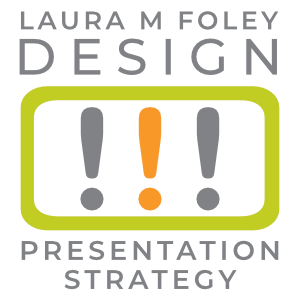After presenting my Cheating Death by PowerPoint workshop, I often ask people how they liked the animation. They usually answer “What animation?” Rather than feel discouraged that all that work I put into my deck went unnoticed, I’m overjoyed that the animation was so seamlessly integrated into the presentation that people didn’t even know it was there. For that, Grasshopper, is the secret of PowerPoint animation: use it if it helps to convey your message; avoid it if it becomes the message.
Transitions
Transitions are the animations that occur when you advance the slides in a deck. Change the transitions by highlighting slides in the left sidebar of the Normal View or in the Slide Sorter View then clicking on the appropriate effect in the Transitions ribbon:
Ordinarily, I’ll select Fade as the standard transition for an entire deck because it’s less jarring than None and Cut and doesn’t call attention to itself. But PowerPoint 2010 tempts the unwitting presentation designer with some pretty out-there transitions, such as Glitter, Vortex, and Cube. These can be used to great effect if you are creating an online presentation or a video but hugely distracting if the deck is being used by a presenter in front of an audience. Use your common sense. If you’re presenting to a bunch of geeks at Comic-Con then maybe the more flamboyant effects would be appropriate. If, on the other hand, you’re teaching Socratic reasoning at a university, then you probably want to exercise a little restraint.
You might notice that on the right side of the Transitions ribbon is a place where you can specify a sound effect for the transition. For the love of all that’s holy, don’t use sound effects for every slide transition. Your audience will hate you. A lot.
Animation
There are too many animation effects to go into great detail in a blog, but I did want to touch on a couple of highlights.
Fade
As with transitions, Fade is a good choice for animating things without calling too much attention to the effect. I use this when clients want bullet points to appear (if I’ve been unable to convince them to eliminate their bullet points) or when graphic elements appear in a sequence. Check out this animation sample:
In the first example, the elements fade into view, allowing you to read what’s in the box. The “Grow and Turn” and “Bounce” effects in the second example are distracting and unpredictable and so call too much attention to themselves.
Motion Paths
As the name implies, Motion Paths enable you to create an animation where elements follow a path that you create. The only preset paths I use are Lines, because I’ve never found a reason to use paths such as Trapezoid, Curvy Right, or Football. Here’s an example of motion paths in use:
As you can see, you can portray either realistic motion (the first example) or random, spazzy motion (the second example). Choose what’s right to communicate your message.
Wipe
The Wipe effect is great for comparing data in a chart because you can have data seem to grow or shrink. Here’s what I mean:
At first, the numbers seem OK, but then the red bars zoom up, showing that nearly half of all customers are dissatisfied. After the red bars grow, the statements appear. In this case, the Zoom effect for the first statement creates a sense of urgency.
Less is More
As I stated in a previous blog post, less really is more. Or, in the case of animation, the appearance of less. Make your PowerPoint animations as complicated or as simple as they need to be in order to effectively communicate your message. Don’t choose a Transition or Animation effect because it’s cool, choose it because it helps you to tell your story.
Your Turn
Do you use animation in your slide presentations and has anybody ever commented on it? Or, as an audience member, has any presenter you’ve seen included animation effects that you didn’t like or that distracted you?

